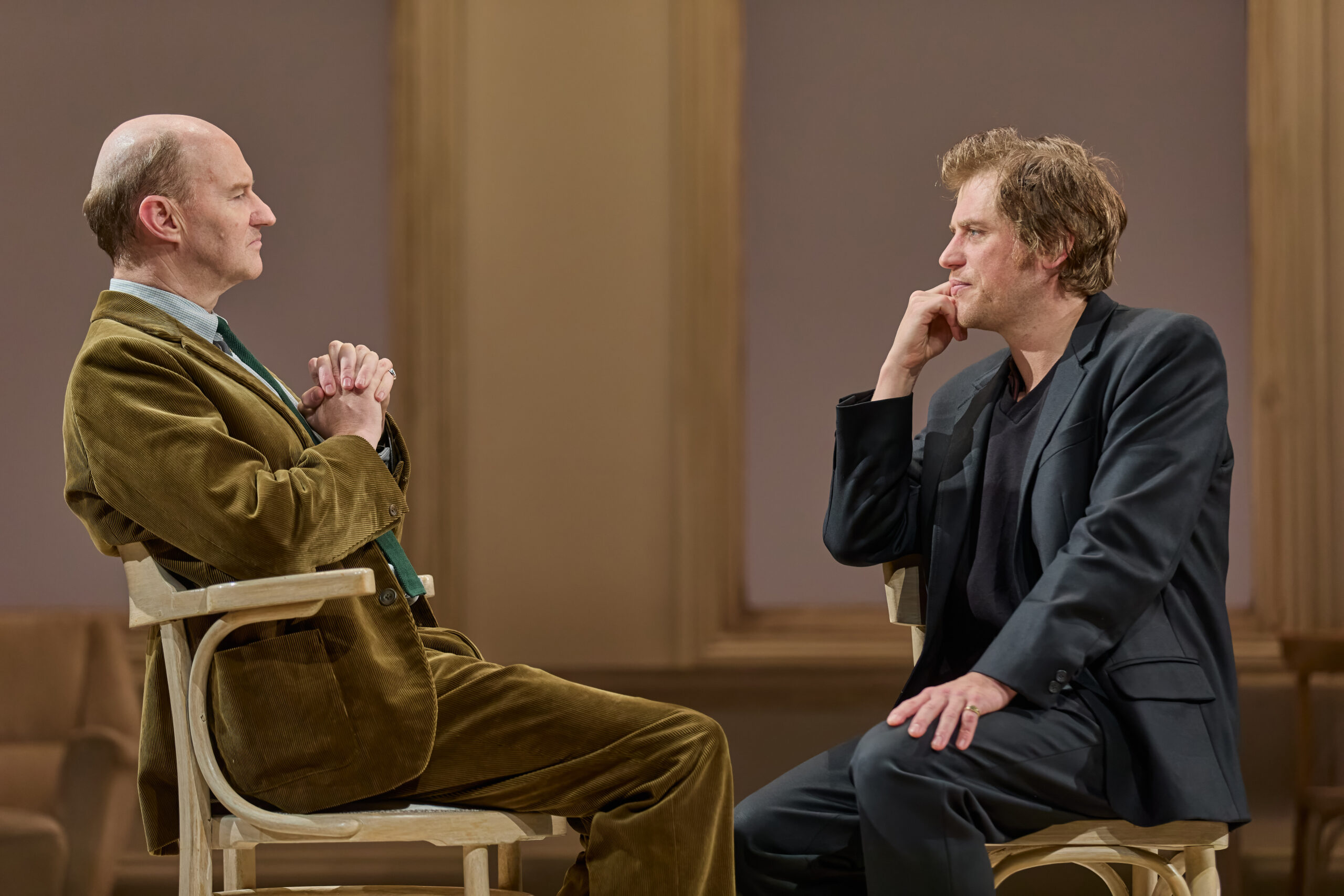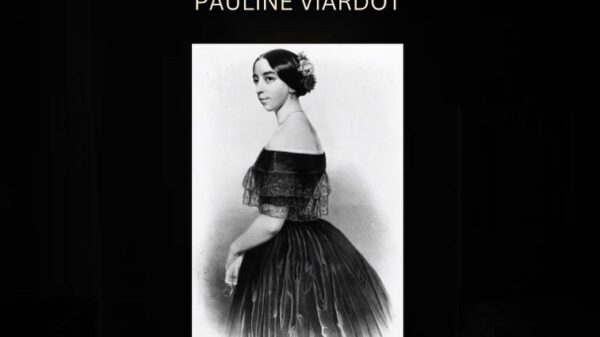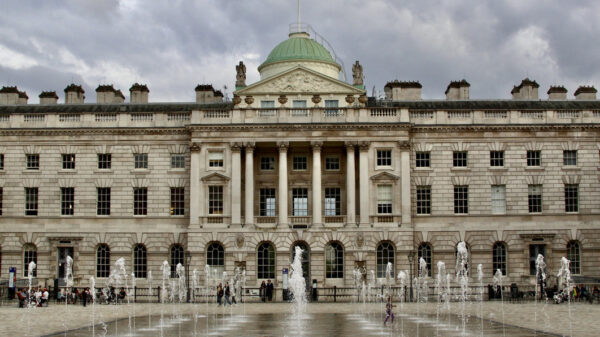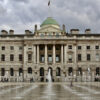Staff Writer Evelyn Shepphird reviews the National Theatre’s ‘The Motive and the Cue’ and its faithfulness to the 1964 ‘Hamlet’ it dramatises.
‘The Motive and the Cue’ was written by Jack Thorne and directed by Sam Mendes. Backdropped against a Leyendecker-esque set by Es Devlin, Mark Gatiss and Johnny Flynn star as the deeply English Sir John Gielgud, a classicist actor-turned-director incapable of reconciling with fleeing fame, and the ruggedly Welsh Richard Burton, a modernist film actor freshly married to Elizabeth Taylor. The play details the short rehearsal process preceding the now iconic 1964 ‘Richard Burton’s Hamlet’ — the longest-running ‘Hamlet’ in Broadway history.
In an intimate and intelligent exploration of the psychology of live Shakespeare, ‘The Motive and the Cue’ sets storms of ego and achingly quiet admissions of vulnerability against the imperious yet austere glamour of the 1960s. The production is at its most interesting when we examine the character of Sir John Gielgud. At age sixty, he struggles to hold onto his pride as his fame recedes. Meanwhile, he is confronted with the unexpected paternal dynamic between him and Burton and the loneliness of his badly closeted homosexuality. Gatiss is categorically brilliant, adding fascinating detail to any of his scenes. His comedic timing is excellent, as he silently projects his frustration with Flynn’s egoist Burton. His habit of mouthing the words – every word to every character – during the rehearsal process is a fascinating look at Gielgud’s reluctance to give up acting.

The play is imbibed with mentions of the giants of Shakespeare acting, like Laurence Olivier. It makes an effort to highlight William Redfield (Luke Norris), who went on to chronicle the rehearsal performance that made ‘Motive’ possible. It’s a show ultimately written by a lover of theatre for fellow theatre lovers.

In its time, the ‘Hamlet’ whose rehearsal process the play dramatizes was more a commercial success than an example of perfect Shakespeare. The real Richard Burton’s portrayal of Hamlet is not that of a seasoned Shakespearian actor – a considerable fraction of his lines are shouted and Burton seems incapable of portraying the anxious, indecisive vulnerability that is characteristic of Hamlet. He is best in the least iconic scenes and, for that price, the classic scenes suffer. Burton shouts his way through most of his confrontations with his mother, his “to be or not to be” is extremely flat, he treats Yorick’s head like a less favourite football and he has a habit of injecting unnecessary bouts of silence in random lines, disrupting the lyric flow of the prose, e.g. “The play’s the thing wherein I’ll catch the conscience… of the king!”.

The most striking moments of Burton’s Hamlet are those between him and the ghost (played – or recorded – by Gielgud). Here, Hamlet’s fraught relationship with his father is palpable and the distress required for the remainder of the play is believable and heartbreaking. ‘Motive’s focus on the pseudo-father/son dynamic between director and actor suggests why these scenes are as brilliant as they are. And Gielgud’s acting – even through a recording – plays a large role. There’s something immensely satisfying about Gielgud as the penultimate Hamlet of the twentieth century, performing King Hamlet through a recording – absent, as Hamlet’s father is in death.

The emphasis on the surrogate father-son dynamic between Gielgud and Burton in ‘The Motive and the Cue’ makes Johnny Flynn’s “to be or not to be” entirely arresting – brilliant in a way Burton’s is not. Flynn performs the soliloquy at the tail end of a scene in which Gielgud and Burton are perhaps at their most intimate. So Flynn’s “to be or not to be” is delivered, already emotionally intense, first to Gatiss’ expressionless visage and then to the audience from the edge of the stage, as unshed tears shine in his eyes and the desperation of the famous speech is suffocating.
Gatiss, in his turn, is beautiful and heartbreaking – prideful, dryly witty, and achingly vulnerable in equal measure – in his scene with a male prostitute. But the most lasting images from the production are from the interplay between Gatiss and Flynn. At the tail end of Act One, Flynn’s Burton egregiously mocks and insults Gatiss’ Gielgud. Although it is deeply uncomfortable, the scene is rife with heart-wrenching moments – Flynn’s guilt-stricken face before he leaves the stage, Gatiss’ voice cracking on a “please”. Later, the singular moment of affection between the two – a gentle parting embrace – aches.
With a familiarity with the 1964 ‘Hamlet’, ‘The Motive and the Cue’ becomes endlessly fascinating. Scene changes are disguised with scenes from ‘Hamlet’ in a perfect homage to the 1964 staging. Although ‘Motive’ goes a long way in explaining the choices made in the 1964 production, ultimately, it is as much about ego, identity, and filial piety as the original. The striking final image of the play – the iconic Yorick pose, is preceded by the numeric success of the production projected before the audience, including a note that Sir John Gielgud himself performed at the Noël Coward Theatre.
‘The Motive and the Cue’ will be showing at the Noël Coward Theatre until 23 March 2024. Richard Burton’s ‘Hamlet’ can be watched on YouTube.
Evelyn Shepphird is a second year student at King's College London, on the European Studies (French Pathway) Programme.



















